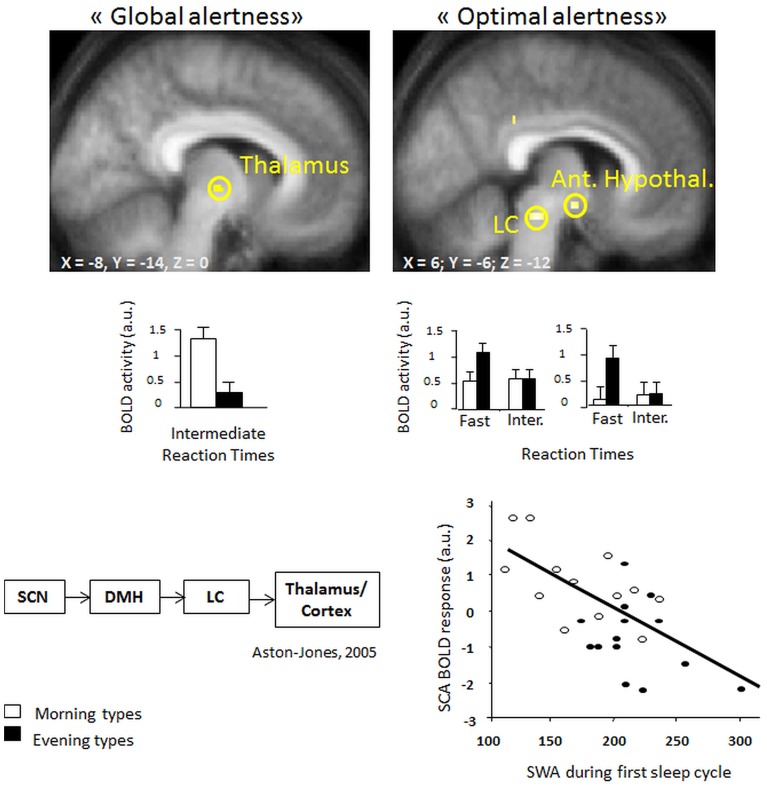Figure 2.
(Left, top panel) higher task-related thalamic activation in morning as compared to evening types for intermediate reaction times (“global alertness”) during the subjective evening hours [modified from Schmidt et al. (2009)] (right, top panel) Higher BOLD activity in locus coeruleus and anterior hypothalamic regions in evening as compared to morning types for “optimal alertness” (10% of fastest reaction times, as compared to intermediate reaction times). (Left, bottom panel) both regions have been implicated in circadian arousal regulation, as illustrated by the model of Aston-Jones et al. (2001). (right, bottom panel) Finally, optimal alertness-related activity in the anterior hypothalamus (i.e., suprachiasmatic area) is negatively related to the amounts of EEG slow wave activity at the beginning of the night, which can be considered as a reliable marker of homeostatic sleep pressure build-up [modified from Schmidt et al. (2009)].

